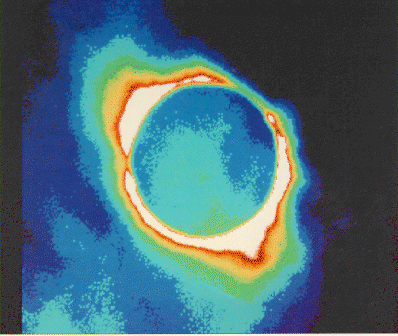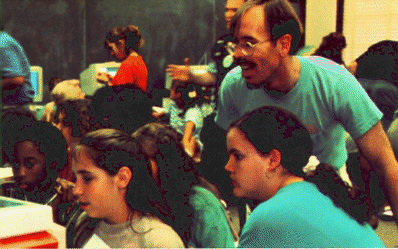


With user-friendly image processing software developed by the Hands-On Universe team, teachers and students can request observations of astronomical objects over phone lines and Internet and transfer them back to their classrooms. Students can zoom in on the blazing halo of the eclipsed sun, search for exploding stars in distant galaxies, and manipulate rich-hued portraits of planets, doing real scientific problem solving while learning astronomy, physics, and mathematics. As they do, they will become part of the global electronic community as well as collaborators in ongoing scientific research with their fellow students and professional astronomers.
LBL astrophysicist Carl Pennypacker is lead scientist for the Hands-On Universe program. Pennypacker, along with UCBerkeley Space Sciences Lab Hands-On Universe Program Manager Elizabeth Arsem, and a core of about 40 teachers and their students have developed the program during the past two years, in conjunction with LBL's Center for Science and Engineering Education.
The Hands-On Universe program serves a rich cultural cross section of American students. In order to reach students in the largest possible number of schools, the cost of the tools needed for the program has been kept low. Program leaders have made special efforts to actively recruit and support schools in under-served communities and provide them with the assistance they need to get "on-line." Hands-On Universe students in America can also collaborate with other participants in the program—students from the Navajo Community College in Arizona, the Southwest Indian Polytechnic Institute in New Mexico, and those affiliated with England's Royal Greenwich Observatory and the Instituto de Astrofisica de Carnarias in Spain.
In its first year, Hands-On Universe classes worked mostly with images stored in a database, plus the few images per week that they could request directly from the telescopes. The program is now fully operational, and Hands-On Universe schools can request observations from the UC Berkeley Astronomy Department's telescopes at Leuschner Observatory. Within a few years, students will be be able to request images from an LBL telescope in the Canary Islands. There are also plans to open a national observatory with an automated telescope dedicated solely to high-school observers.
Says Pennypacker, "A lot of high-school kids will be able to do real and relevant professional-grade astronomy research for the first time in history."